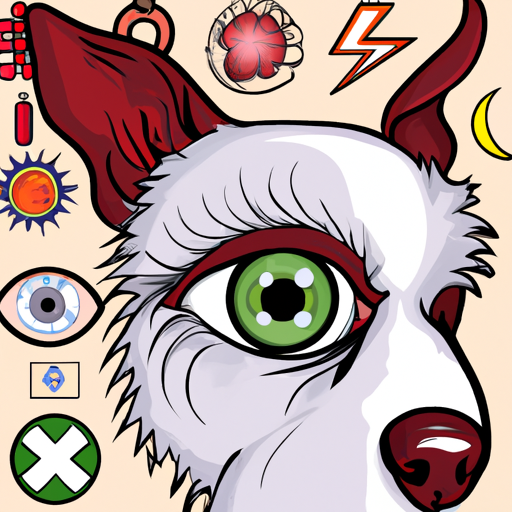1. Understanding Cherry Eye
Cherry eye, more scientifically known as nictitating membrane prolapse, is a common health issue that affects many dogs. This condition is characterized by an overly visible third eyelid, creating a “cherry-like” appearance.
It’s important not to panic if you notice this in your dog. While it may look alarming, cherry eye is not typically painful for dogs. However, it does need to be addressed swiftly to prevent any further complications.
2. The Causes Behind Cherry Eye
The exact cause of cherry eye is not fully understood by veterinarians, but it’s believed to be a hereditary condition. Some breeds are more prone to this condition than others.
Here is a table showing the breeds at higher risk:
| Dog Breeds |
|---|
| Bulldogs |
| Beagles |
| Cocker Spaniels |
| Shih Tzus |
| Lhasa Apsos |
The prolapse of the third eyelid is often the result of a weakness in the gland’s connective tissue. This weakness allows the gland to shift out of its normal position and become visible.
3. Recognizing Symptoms
To ensure you’re able to swiftly attend to your dog’s needs, you must be aware of the symptoms. Cherry eye is most easily identified by a red mass protruding from the corner of the eye.
Other signs may include:
- Excessive tear production
- Pawing at the eye
- Swelling
- Redness
4. Treating Cherry Eye
Cherry eye is a condition that requires professional veterinary care. While there are surgical and non-surgical treatments available, surgery is the most common course of action.
Your vet may recommend:
- Manual repositioning: This involves pushing the gland back into place.
- Surgical repositioning: This is a more permanent solution where the gland is stitched back into its normal position.
- Gland removal: This is typically the last resort, as it can lead to dry eye syndrome.
5. Preventing Cherry Eye
While you can’t entirely prevent cherry eye due to its hereditary nature, you can take steps to ensure your dog’s overall eye health.
Consider:
- Regular vet checkups
- Gentle eye cleaning
- Providing a healthy diet
- Avoiding eye trauma
FAQ
Q: Is Cherry Eye painful for my dog?
A: While it may look uncomfortable, cherry eye itself is not typically painful. However, if left untreated, it can lead to discomfort and further health issues.
Q: Can Cherry Eye go away on its own?
A: Cherry eye may occasionally resolve itself, but it’s crucial to seek veterinary care to avoid potential complications.
Q: Is Cherry Eye contagious?
A: No, cherry eye is not contagious. It is a hereditary condition.
Remember, as a caring and responsible pet owner, your dog’s health and well-being should always be a priority. If you’re ever in doubt about your dog’s health, don’t hesitate to consult with a veterinarian.



